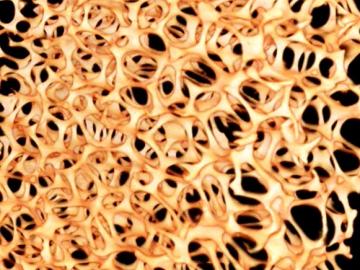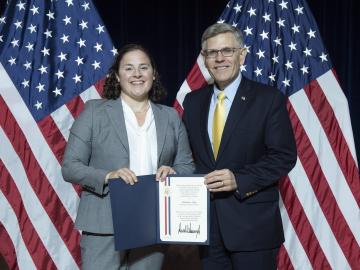Filter News
Area of Research
- (-) Neutron Science (39)
- Advanced Manufacturing (13)
- Biological Systems (1)
- Biology and Environment (41)
- Building Technologies (2)
- Clean Energy (129)
- Climate and Environmental Systems (2)
- Computational Biology (1)
- Computational Engineering (3)
- Computer Science (12)
- Electricity and Smart Grid (1)
- Fusion and Fission (14)
- Fusion Energy (7)
- Isotopes (12)
- Materials (70)
- Materials for Computing (18)
- Mathematics (1)
- National Security (12)
- Nuclear Science and Technology (12)
- Quantum information Science (6)
- Sensors and Controls (1)
- Supercomputing (52)
- Transportation Systems (2)
News Topics
- 3-D Printing/Advanced Manufacturing (1)
- Artificial Intelligence (2)
- Bioenergy (1)
- Biology (2)
- Biomedical (4)
- Chemical Sciences (1)
- Clean Water (1)
- Computer Science (6)
- Coronavirus (2)
- Energy Storage (3)
- Environment (4)
- Fusion (1)
- High-Performance Computing (1)
- Machine Learning (1)
- Materials (3)
- Materials Science (7)
- Microscopy (2)
- Nanotechnology (2)
- Neutron Science (32)
- Nuclear Energy (1)
- Physics (3)
- Quantum Computing (1)
- Quantum Science (3)
- Space Exploration (1)
- Transportation (1)
Media Contacts

Two of the researchers who share the Nobel Prize in Chemistry announced Wednesday—John B. Goodenough of the University of Texas at Austin and M. Stanley Whittingham of Binghamton University in New York—have research ties to ORNL.

Researchers at Oak Ridge National Laboratory demonstrated that metal foam enhances the evaporation process in thermal conversion systems and enables the development of compact HVAC&R units.

Researchers used neutron scattering at Oak Ridge National Laboratory’s Spallation Neutron Source and High Flux Isotope Reactor to better understand how certain cells in human tissue bond together.

Using the Titan supercomputer and the Spallation Neutron Source at the Department of Energy’s Oak Ridge National Laboratory, scientists have created the most accurate 3D model yet of an intrinsically disordered protein, revealing the ensemble of its atomic-level structures.

Researchers used neutron scattering at Oak Ridge National Laboratory’s Spallation Neutron Source to probe the structure of a colorful new material that may pave the way for improved sensors and vivid displays.

Collaborators at the Department of Energy’s Oak Ridge National Laboratory and U.S. universities used neutron scattering and other advanced characterization techniques to study how a prominent catalyst enables the “water-gas shift” reaction to purify and generate hydrogen at industrial scale.

Two researchers from the Department of Energy’s Oak Ridge National Laboratory have received a 2019 Presidential Early Career Award for Scientists and Engineers, or PECASE.

Researchers have pioneered a new technique using pressure to manipulate magnetism in thin film materials used to enhance performance in electronic devices.

Scientists have discovered a way to alter heat transport in thermoelectric materials, a finding that may ultimately improve energy efficiency as the materials

An ORNL-led team's observation of certain crystalline ice phases challenges accepted theories about super-cooled water and non-crystalline ice. Their findings, reported in the journal Nature, will also lead to better understanding of ice and its various phases found on other planets, moons and elsewhere in space.




